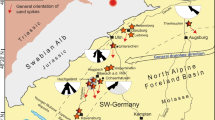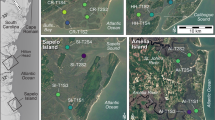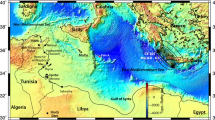Abstract
QUICKSAND structures similar to those described by Selley (ref. 1, Fig. 1a and b) abound in the bedded tuffs (Ordovician) of Great Langdale. These sediments appear to have been highly susceptible to the type of behaviour suggested by Shearman2 and called by him “ ‘quicksand’ movement”. These authors described examples in Torri-donian1 and Devonian2 sandstones where this process, involving the repacking of sand grains and the expulsion of excess pore-water from the sediment, had, they assumed, operated “penecontemporaneously”. It appears that both authors consider that this process took place below a thin (less than 1 m ?) cover of sediment.
This is a preview of subscription content, access via your institution
Access options
Subscribe to this journal
Receive 51 print issues and online access
$199.00 per year
only $3.90 per issue
Buy this article
- Purchase on Springer Link
- Instant access to full article PDF
Prices may be subject to local taxes which are calculated during checkout
Similar content being viewed by others
References
Selley, R. C., in Developments in Sedimentology, 1 (Elsevier Co., London, 1964).
Shearman, D. J., in Developments in Sedimentology, 1 (Elsevier Co., London, 1964).
Author information
Authors and Affiliations
Rights and permissions
About this article
Cite this article
PARKER, W. Quicksand Structures in the Bedded Tuffs of Great Langdale, Westmorland. Nature 210, 1247–1248 (1966). https://doi.org/10.1038/2101247a0
Issue Date:
DOI: https://doi.org/10.1038/2101247a0
This article is cited by
-
Living quicksand
Granular Matter (2009)
Comments
By submitting a comment you agree to abide by our Terms and Community Guidelines. If you find something abusive or that does not comply with our terms or guidelines please flag it as inappropriate.



